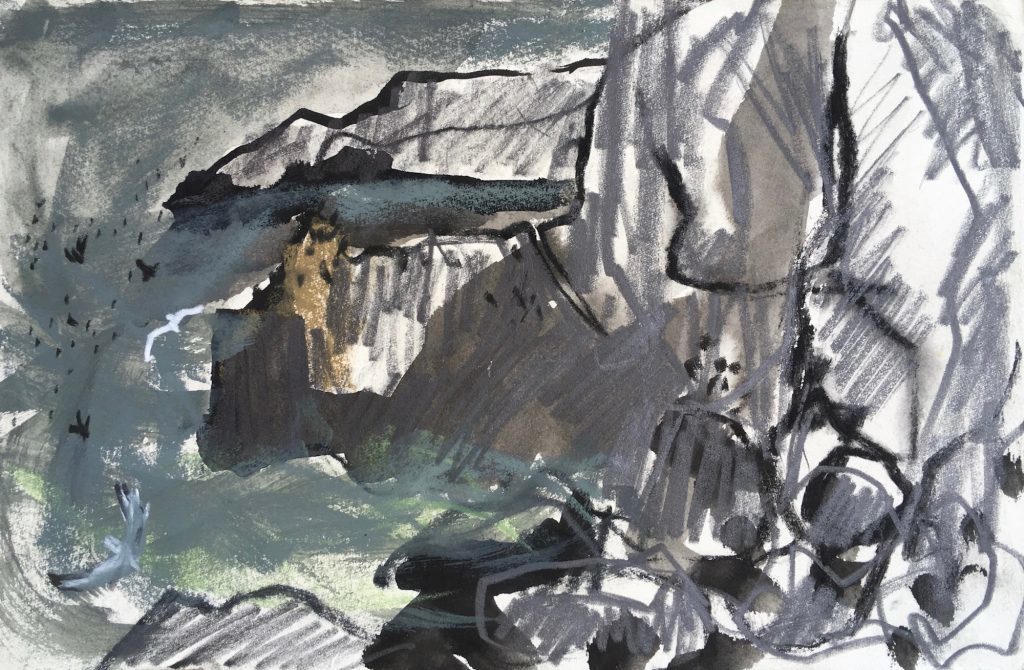Emily Ingrey-Counter – bursary winner 2018
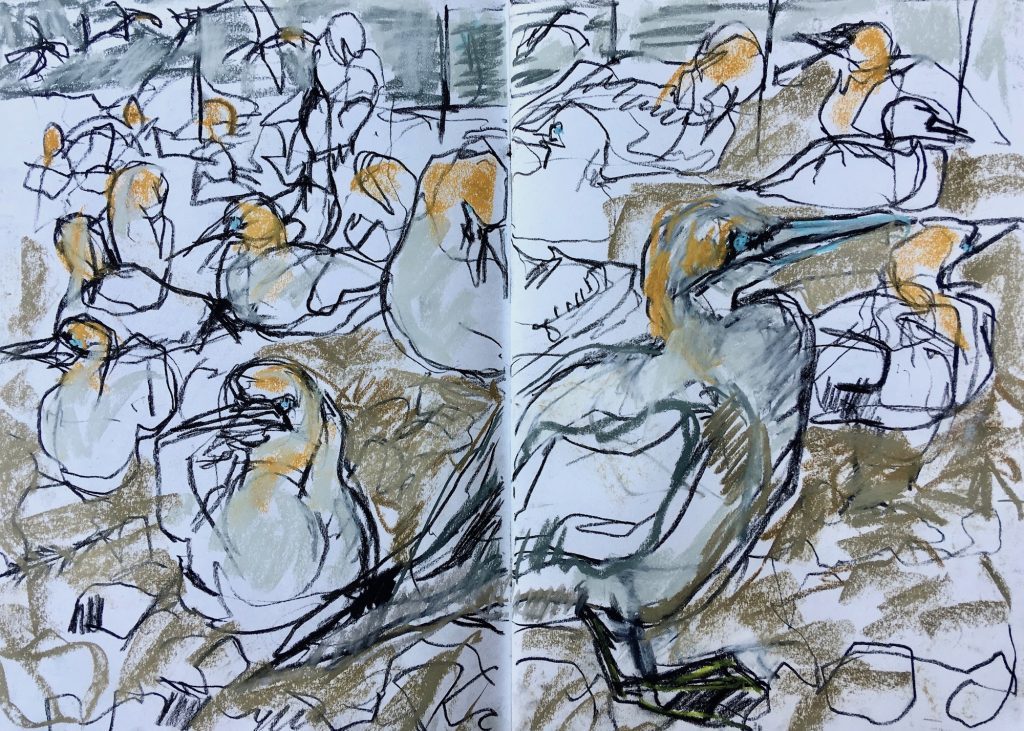
As an artist who regularly draws in the field, I was so delighted to be accepted onto the seabird drawing course. My primary aim for the week was to learn from others who love to draw and spend time observing and recording the natural world. The seabird drawing week was challenging and intense and pushed me in ways that I hadn’t anticipated. We met each day at 8.30/9am and then travelled to our destination for the day; Dunbar, St Abb’s or the harbour where we could meet the boat to take us to the islands of Fidra or Bass Rock. Each evening we met again at the hotel for dinner, which was followed by an informal chat, looking at each other’s work and planning out who was going where the following day, often finishing around 10pm.
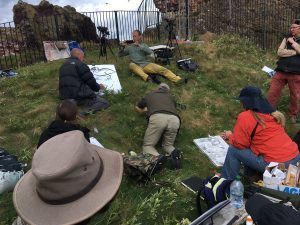
One of the highlights for me was getting to know other artists within the group and sharing our experiences and our work at the end of each day. Naturally, I discovered that in the emotional highs and lows of a good/bad day, I was certainly not alone. Although the prospect of sharing our work each day with the whole group was quite daunting I actually found the feedback surprisingly encouraging.
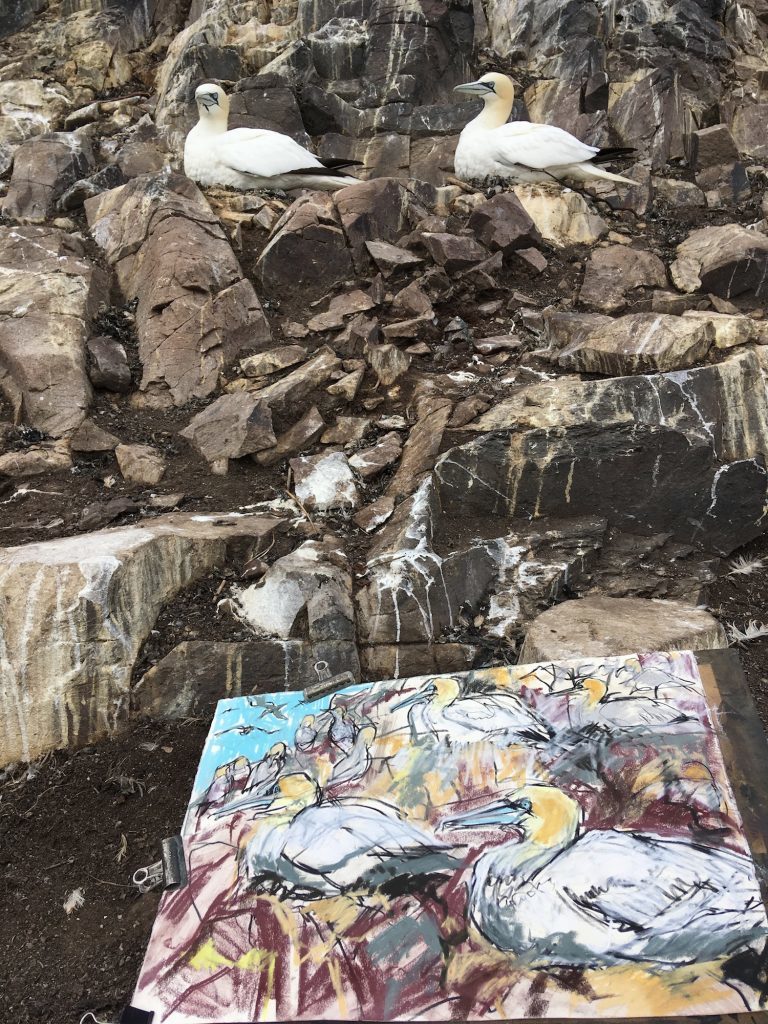
Another highlight of the week was, of course, visiting the Bass Rock. The weather, winds and swells were in the right alignment for us this year as both groups were able to get access to the gannet colony for a whole day. A huge privilege. It was noisy, smelly, dirty and quite fantastic!
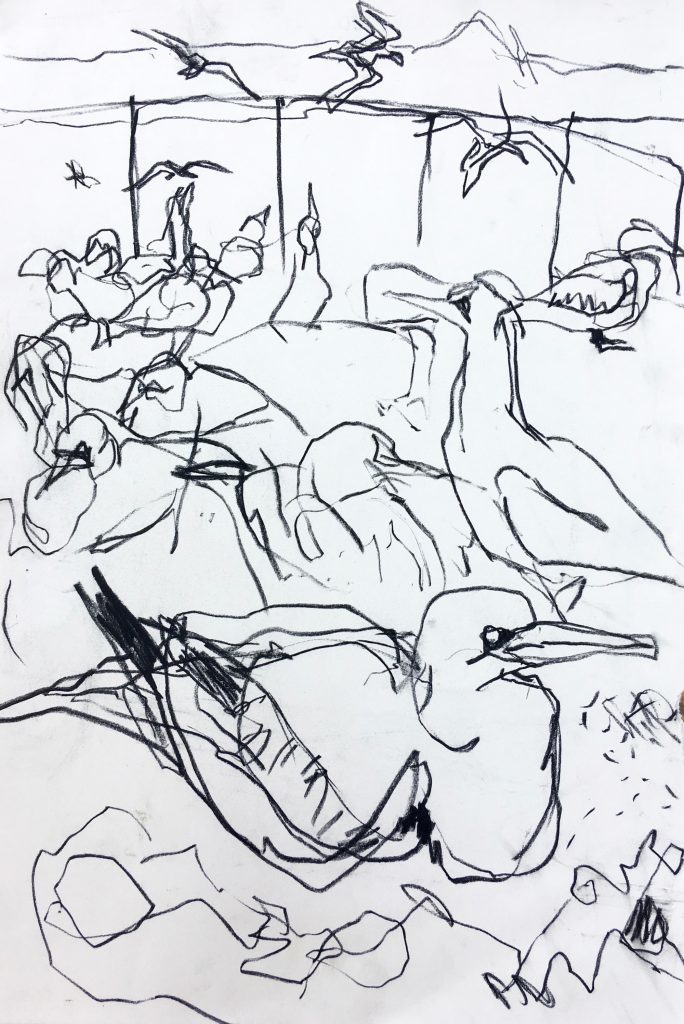
I felt like I’d landed on another planet, with 150,000 inhabitants tolerating our presence. Due to the wind there, birds were constantly in flight around us hovering, landing and taking flight. We all drew with intensity and focus for about 7 hours. Amazing! The following day the swells were too strong to land on the island so we sketched from the boat for an hour – which was a great way to develop fast sketches, but challenging in terms of motion sickness!
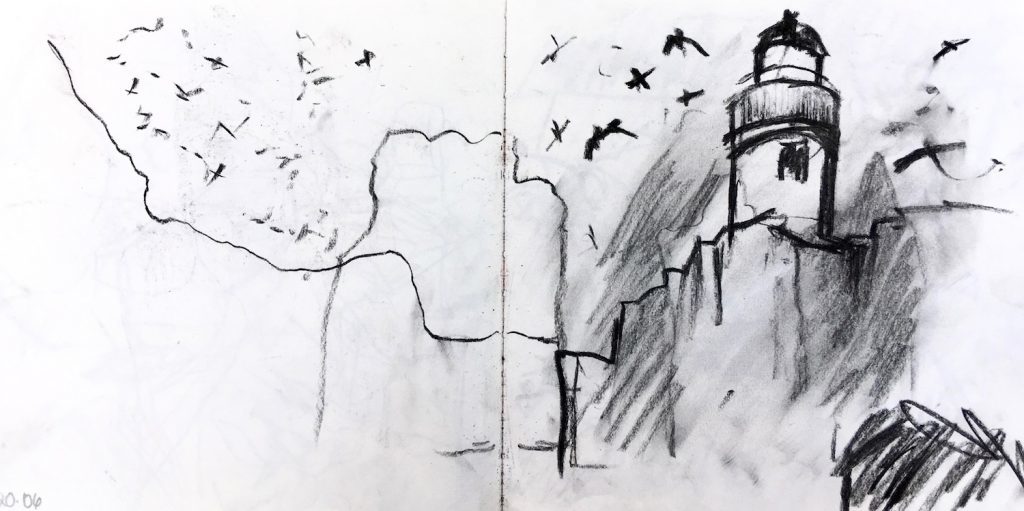
St Abb’s Head was another location that was incredibly inspiring. Although I have drawn here before, this time I really wanted to capture the sheer and exposed cliff faces on which the birds nest and how small (but many) they are in such an immense landscape. The days we spent there were very windy creating large swells and crashing waves with thousands of guillemots on cliff edges, in flight and at sea.
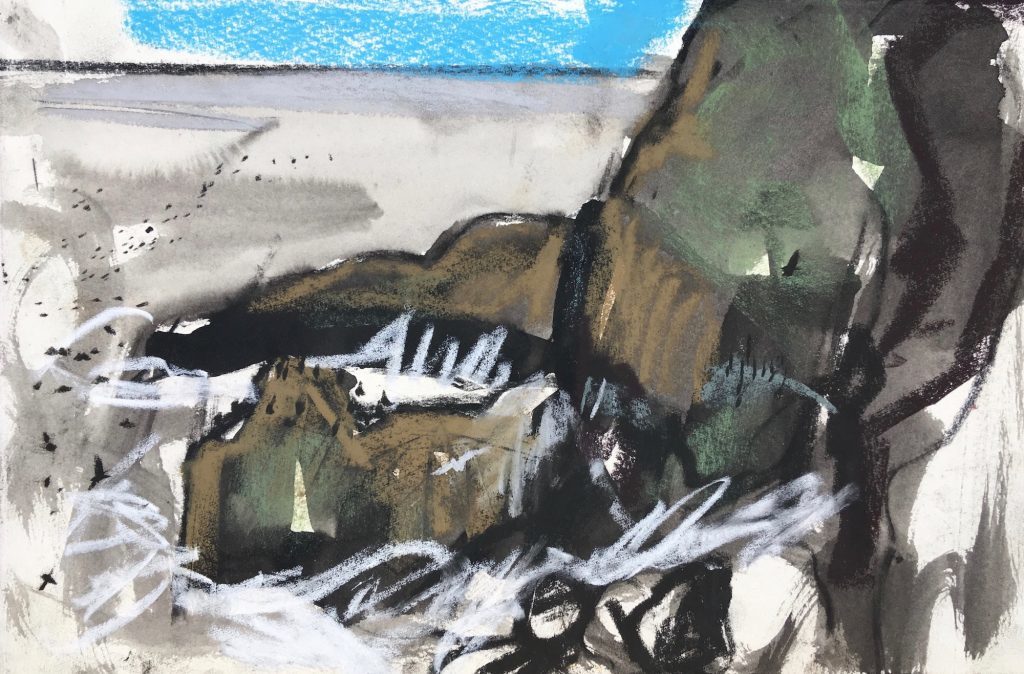
The informal one to one tutor guidance throughout the week was really helpful. I was reminded of some key elements that had been creeping out of my drawings ‘Keep a breathing space in your picture’, ‘What excites you about your chosen subject matter? Keep this in mind throughout your drawing.’ Also, ‘Keep your work fresh, try not to overwork your pictures’ ‘Think about keeping the energy in your work’. Seeing examples of the tutors work and hearing about their practice and individual approach to working was also something I really enjoyed and would like to hear more of.
Through many discussions with the tutors and artists on the course, I was encouraged to value what I do, something that’s easy to lose sight of.
I am really grateful to the SWLA for making this week possible. I hope the things I have learnt will continue to echo through my work. It was such a privilege to meet so many people on this unique journey of making art inspired by our natural world.
